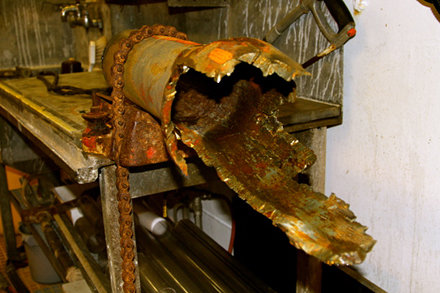
Blowing Up Drill Pipe
Drilling two thousand meters below sea level into hard rock from a ship is not something you do on a lark. So when our drill pipe was stuck a couple days ago, it did not require a lot of guesswork to find a way to free us. It did require explosives, though.
The drill pipe was stuck in the rubble that broke free as we drilled into brittle layers of glassy, basaltic breccia. The engineers and roughnecks drew on decades of drilling knowledge and systematically tried every option to free the drill pipe, but none of them were successful.
Explosives were the last resort. The explosive used (called HMX) is not the type that cartoon characters use to blow up other cartoon characters. Instead of a chaotic, unpredictable explosion, HMX sends out a huge but focused shockwave that is pretty much guaranteed to neatly sever the drill pipe.
The tricky part was getting it to go off at just the right place above the stuck pipe. The explosive was lowered into the pipe by a winch and would be detonated by a electric current sent down the cable. However, once the detonator was armed, there is the possibility that a stray radio wave could connect with the wireline and create an electric current that would set off the explosives prematurely. To prevent this, everybody on the ship lined up to turn in our cell phones and anything else that could potentially send out a radio wave. Once those were in hand and the chance of us inadvertently doing something we would regret eternally was over, they went to work preparing the charge.
This took a few hours and lowering it down the drill pipe took a few hours more, which meant it would be detonated in the middle of my bedtime. I figured since it was a small explosion happening over 1800 meters below the sea, the chances of it being visibly and audibly dramatic were slim, so I went to sleep (I was right, there was nothing to see). Went they brought the pipe up, though, we saw how effective the explosive was (see the photo) and were impressed with how prepared the crew were to make sure the JOIDES Resolution did not become a permanent feature of the seamount we were attached to.
Photo by Christoph Beier.